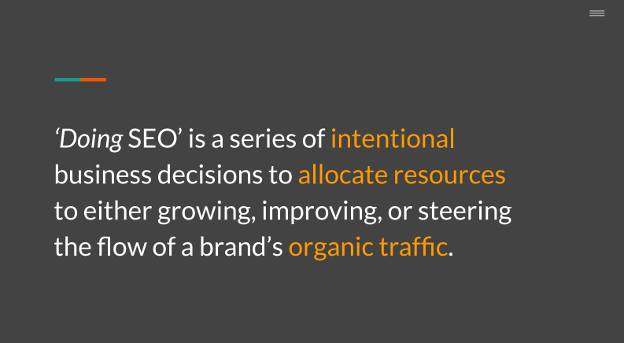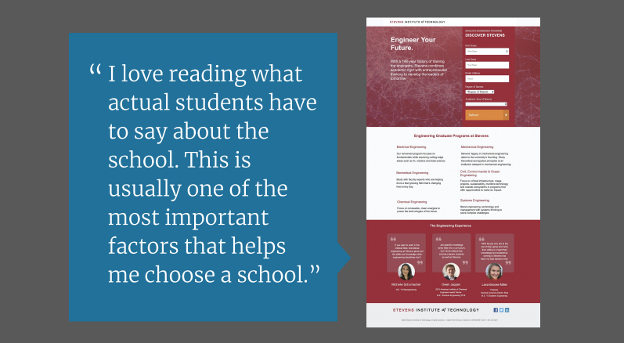Recap: 2019 Higher Education Digital Marketing Bootcamp
Our 2019 Higher Education Digital Marketing Bootcamp brought nearly 100 attendees from more than 27 colleges and universities throughout the northeast to the Boston College Club for a full-day of presentations and networking.
In 2018, OHO held the first Higher Education Digital Marketing Bootcamp to help higher ed professionals understand how other colleges and universities structure their marketing departments, prioritize projects, and set budgets. OHO also took note that in their survey, The State of Higher Education Web Teams, communications departments at both large and small colleges and universities wanted to build digital marketing skills in-house. OHO designed the digital bootcamp for these professionals to meet in a room, share ideas with their peers, and return to campus inspired and ready to implement some new digital marketing techniques.
This year, nearly 100 attendees from more than 27 colleges and universities throughout the northeast traveled to Boston for the second annual Bootcamp event.
For those who couldn’t attend in person, we’ve compiled summaries of each of the day’s presentations with key insights from each talk.
Marketing as a Change Agent, Not an Order Taker
Supriya Chaudhury, Head of Global Marketing at Harvard Business Publishing, shared her experiences coming from an agency into higher ed, and how her team drove growth within the Division of Continuing Ed by building relationships, showing data, and experimenting with creative campaigns.
- Having an inspirational leader who has big ideas but has confidence in their team to execute on those ideas is paramount. You need someone who can advocate for the marketing team and give them cover to work to drive change that may, at first, be controversial.
- From Supriya’s experience, program directors were generally most open to change when they were just beginning work on building a new program. Injecting the marketing team into the process early on ensured they were most open to receiving help and guidance.
A Successful, Sustainable Approach to Showcasing your Institution

One of the most popular sessions of the day covered digital storytelling — presented by OHO’s Director of Digital Strategy, Georgy Cohen.
- Before you can start elevating stories on your campus, you need to break free of the mindset that stories and news are the same. Stories are who people are. They're more evergreen, thematic, and proactive than news stories, which are generally more of a snapshot in time (something happened, and here's how it happened).
- The best stories cut across the various “silos” in an institution, so digital communicators must cultivate relationships across campus and train your organization to best capture the stories that come out of the different programs.
- The attention span of the average member of generation Z is just eight seconds. With such a limited window to grab their attention, visual content is one of your greatest tools you have to affect the emotional impact of your narrative.
Measuring Social Media Success
Three social media professionals spoke about their social strategies during the panel, “Measuring Social Media Success,” moderated by OHO's Kara Sassone. The panel featured Jenny Fowler, Manager of Social Media Strategy at MIT, Kimberly Moniz, Digital Communications Coordinator at Harvard University, and Emily Earle, Social Media Specialist at Lesley University. The panelists discussed how they share social media data reports with administration, success stories and failures, and how they work within the larger communications departments at their school.
- When crafting your reports, make sure you know your audience. Everyone’s understanding of social media is different, and you’ll want to choose metrics that will resonate with whoever reviews your reports.
- Big numbers and wins are great, but it’s important to surface less tangible victories as well. If you’re doing something creative and unique, find ways to highlight that in your reporting.
SEO: A Modern Framework for Higher Education

In his presentation on SEO Dan Hurley, Digital Strategist at OHO, reassured bootcamp participants that they are probably already driving traffic through SEO without even realizing it simply by having an .edu website address. Dan provided the audience with best practices on how to “be stewards of that traffic and steer the traffic where we want it to go.”
- Schools can grow their SEO opportunity by leveraging what’s in their control by creating their own metadata, artfully placing keywords, and getting smarter with content.
- You’ll see more SEO success if you bake it into your content-creation process, instead of trying to optimize content after it’s already been created.
Paid Digital Marketing: How to Plan, Prioritize, and Set a Budget
The discussion moved from organic search results to paid digital marketing when Jason Smith sat down with Kathy Goldberg, Senior Manager of Brand Marketing at Babson College.
- When planning a budget, start by analyzing each section of your funnel and allocating resources accordingly. This makes it more manageable, but also shows you which areas are the mostly costly and can help you better determine ROI.
- Even though you may be a full service marketing organization, there are still benefits to working with an external agency. You can do more with less, and makes your team more agile.
- You need to make room in your budget for testing new ideas. If you don’t have som percentage of your budget earmarked for new ideas, you’ll never have the ability to innovate.
Best Practices for User-Centric Websites and Landing Pages

In her talk, Katherine Cornelius, Visual and UX Designer for OHO walked the audience through the design of a landing page for Stevens Institute of Technology in New Jersey.
- Users have a tendency to skim content, so techniques like using shorter paragraphs, writing meaningful subheadings, and relying on bullets can really improve the user experience.
- Adherence to brand standards is especially critical for landing pages. You may be directing users to the page from multiple channels, and you want to provide them with context.
Turn Your Content Into Leads

OHO’s Director of Digital Marketing Vanessa Theoharis shared strategies for using personalization to drive conversions.
- Gen Z is expecting a more personalized experience when they visit sites online, and schools can personalize their digital marketing by tracking what users are interested in on their site, where they are on the customer journey, and CRM data they may have on the visitor to help convert them.
- Customer journey mapping can help you identify when, where, and how to add personalization elements to your site.
What Prospective Students Really Think of Higher Ed Websites
The bootcamp wrapped up with a panel of 6 high school juniors and seniors who either just completed or are in the midst of looking for schools. Jim Dalglish, Director of UX Strategy and Research at OHO led the lively discussion about how the students prefer to receive marketing materials from schools, what media they typically use, and what they look for in a college website.
- It can be difficult to showcase diversity on your site in a genuine way. Stock photography was universally panned by the students, some of whom stressed the need for unbiased student testimonials and videos to highlight diversity on campus.
- The user experience on mobile is absolutely critical. Every student on the panel used a mobile device to aid in their college search, and some used mobile exclusively.
- If you want students to apply, you need to make that process as simple as possible. Many of the students on the panel were frustrated by clunky and confusing online application processes.
Throughout the day the teen’s words and marketing experts’ presentations imparted a sense of purpose to the communication professionals in the audience by showing how important a school’s website and digital strategy is, not just by the role it plays in informing prospective students about the school but by how it conveys a sense of belonging and welcome and invites visitors to become an integral part of the school’s community.